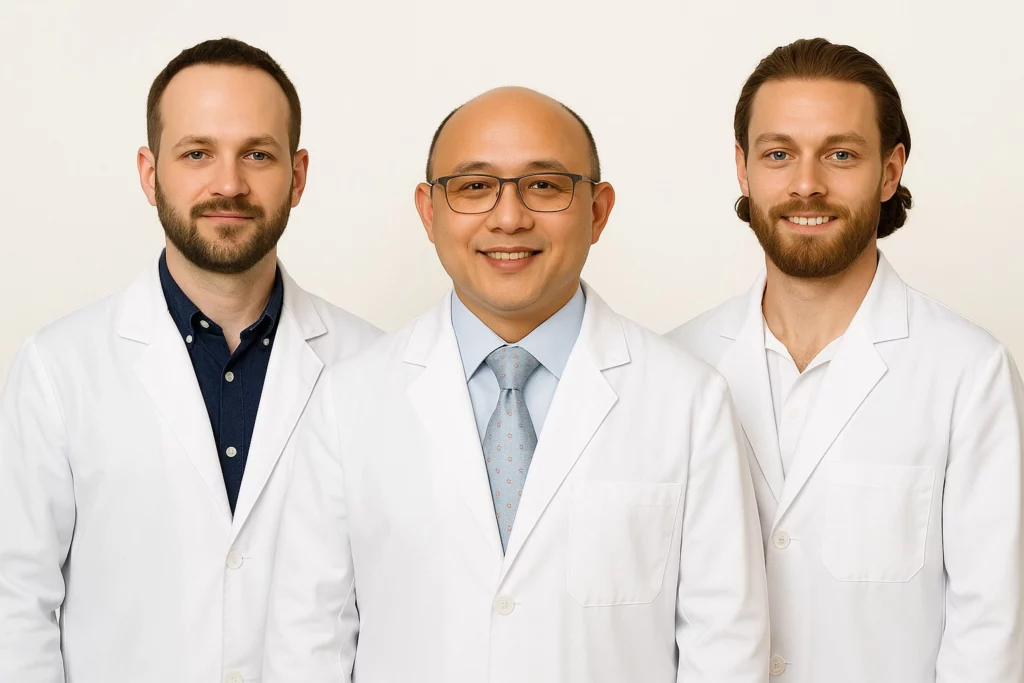
Therapeutic Healing That Goes Beyond Relaxation
At Washington Chiropractic, massage therapy is more than just relaxation—it’s an essential part of healing. After a car accident or physical trauma, your body can hold on to tension in ways you may not realize. Massage therapy helps release that tightness, restore blood flow, and promote faster healing. It’s also an ideal companion to chiropractic care, especially when you’re too sore for spinal adjustments. Whether you’re experiencing acute muscle pain or lingering tightness, our licensed massage therapists provide a calming space where your body can unwind and your mind can reset.
Book your massage session today and start healing—inside and out.
Types of Massage Therapy
We offer several therapeutic massage modalities, each targeting to support specific recovery needs. Whether you’re dealing with injury-related stiffness, chronic tension, or postural imbalances, our therapists customize each session to your body’s condition and comfort level. Common techniques include:
- Trigger Point Therapy: It targets tight, delicate knots (trigger points) that send pain to other areas of the body. Once these points are released, the normal muscle function is restored, and referred pain is alleviated.
- Swedish Massage: A technique involving light to medium pressure strokes and long movements that relax the entire body. Ideal for general stress relief and nervous system regulation, especially after trauma or emotional strain.
- Cupping Massage: It uses suction to pull soft tissue up and enhance the blood flow. Cupping is great for relieving deep muscle tension, breaking up fascia, and lymphatic drainage.
- Deep Tissue Massage: This technique was designed to reach deeper in layers of muscle and fascia, treating chronic pain, healing from an injury, restricted mobility. By applying sustained pressure, intensive and comfortable at the same time, therapists reduce inflammation and restore function.
- Active Release Sports Massage: It couples targeted pressure with the right movements to break up the adhesions, release the scar tissue, and improve movement range. Excellent for athletes and post-injury recovery.
- Prenatal Massage: An acceptable and supportive therapy for pregnant mothers, which helps alleviate physical pain, promotes blood circulation, and helps reduce stress.
Therapeutic Stone Massage
Our stone massage therapy integrates heat into deep relaxation. Warm stones are placed on key points of the body and used during massage strokes to melt away muscular tension. This method improves blood circulation, helps relieve chronic muscle pain, and reduces inflammation. Ideal for patients dealing with stress-related tension or recovering from repetitive strain injuries, therapeutic stone massage allows your body to absorb consistent, comforting heat while muscles release tightness at a deeper level. It’s especially beneficial for those who respond well to calming and grounding treatment environments.
Deep Tissue Massage
When your pain runs deep, so should the therapy. Deep tissue massage is designed to reach the inner layers of muscles and connective tissue, addressing stubborn pain, tightness, and injury-related muscle imbalances. This method is often recommended for chronic pain sufferers or post-accident recovery patients with restricted mobility. Though firmer than other styles, our therapists work intuitively to balance intensity with your comfort level. Over time, deep tissue massage can restore proper posture, increase flexibility, and reduce muscular inflammation that’s otherwise difficult to treat.
Reflexology Foot Massage
A good massage doesn’t always start with the spine. Reflexology focuses on pressure points in the feet that correspond to organs and systems in the body. This technique improves energy flow, reduces tension throughout the nervous system, and promotes full-body balance. Especially helpful for patients with poor circulation, stress-related headaches, or fatigue, reflexology can be surprisingly powerful. Our therapists apply specific pressure with a gentle rhythm, encouraging a deep sense of calm and systemic wellness—starting from the ground up.
Swedish Massage
The classic choice for those new to massage or needing gentle restoration, Swedish massage uses long, flowing strokes and light-to-medium pressure. This technique boosts circulation, decreases cortisol levels, and promotes overall relaxation. In post-accident cases, it’s useful for calming the nervous system and encouraging recovery from inflammation and stress. If you’re dealing with general aches, fatigue, or emotional overwhelm after trauma, Swedish massage can gently ease your body into healing while resetting your nervous system.
Relaxing Back, Neck, and Shoulder Massage
One of the most requested treatments at our clinic, this targeted massage focuses on the areas that carry most of our physical and emotional load. Whether it’s from daily desk work or trauma from an accident, your back, neck, and shoulders often hold chronic tension that worsens with time. Our therapists use a blend of pressure and movement to release stiffness, reduce spasms, and improve blood flow. Patients often report immediate relief from headaches, upper back tension, and neck pain following these sessions.
Benefits of Massage Therapy
Massage therapy isn’t just about feeling good—it helps your body function better. Here’s how:
- Improves blood circulation and tissue healing
- Reduces inflammation and muscle spasms
- Relieves pain naturally without medication
- Enhances flexibility and mobility
- Lowers stress hormones and improves sleep
- Supports emotional well-being post-trauma
It’s one of the few therapies that supports both physical healing and emotional recalibration, making it a key part of every personalized recovery plan at our clinic.
How Massage Therapy Helps with Car Accident Treatment
After a car accident, your muscles often lock up to protect the body. While helpful short-term, this tension can become chronic if not released. Massage therapy helps:
- Loosen soft tissue
- Reduce scar tissue development
- Promote blood flow to injured areas
- Relieve secondary pain like tension headaches
- Make chiropractic adjustments more effective
For patients who are too sore or inflamed for adjustments right away, massage provides an essential first step on the path to recovery.
What to Expect During Massage Therapy
Your first session will begin with a brief consultation. Our therapists want to understand your injury history, current pain, and goals. Then you’ll relax on a treatment table in a quiet, private room. Depending on the modality, the session will last 30–60 minutes. Communication is key—our therapists will adjust pressure and techniques based on your feedback. Whether you’re receiving deep tissue work or a calming Swedish session, you’ll leave with less tension, better mobility, and a clearer mind.
Why Choose Washington Chiropractic for Massage Therapy
We integrate massage into your care—not as an add-on, but as a core part of healing. Our licensed massage therapists specialize in trauma-informed care, tailoring every session to your injury stage and comfort level. We don’t believe in generic routines. Whether you’re fresh from an accident or dealing with stubborn tension, we build your massage plan around you. Plus, massage is often included with your treatment sessions—so you won’t need to book separately or worry about extra costs. This isn’t luxury. It’s recovery.
Book a massage therapy appointment at Washington Chiropractic and take the next step in real, lasting relief.
BOOK AN APPOINTMENT
Please use the booking tool below to book an appointment at our Kennewick location or call us at (509) 579-0008
Links for other locations: Lakewood Chiropractic clinic and Pasco Chiropractic clinic
FAQs
1. How does massage therapy complement chiropractic care?
Massage therapy helps release tension in muscles, making spinal adjustments easier and more effective. It prepares soft tissue for alignment and supports longer-lasting results by improving flexibility and reducing inflammation in areas of pain or restriction.
2. How does massage help with rehabilitation?
Massage promotes circulation, reduces scar tissue, and eases muscle tension—all critical in healing after injuries. It also enhances mobility and supports nervous system regulation, accelerating the body’s natural recovery process, especially after trauma or surgery.
3. How often to visit for massage therapy?
Frequency depends on your condition and goals. Post-injury patients may benefit from 2–3 sessions per week, while maintenance or stress relief clients may need biweekly or monthly visits. Your provider will tailor a plan to your healing timeline.
4. What does massage do for the body?
Massage therapy improves blood flow, reduces muscle stiffness, supports lymphatic drainage, and lowers stress hormones. It helps relieve pain, ease tension, and promotes deep relaxation—making it both a physical and emotional support tool for recovery and wellness.
Content Reviewed by

